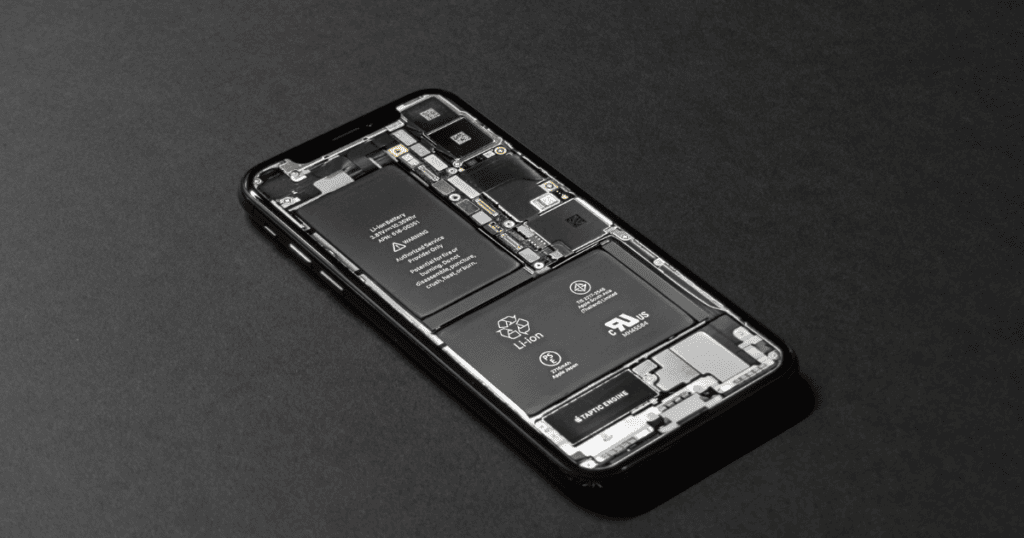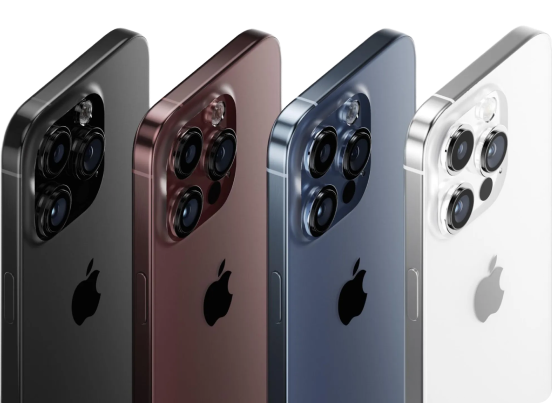In the ever-evolving landscape of mobile technology, the impending release of Apple’s iPhone 16 and 16 Plus has become the focal point of industry prognostications. With a history of setting benchmarks in design and functionality, Apple’s new flagships are rumored to be on the cusp of introducing profound changes that could potentially recalibrate consumer expectations and competitive dynamics within the smartphone market. Advanced specifications and significant camera enhancements are among the expected features, poised to challenge the status quo of mobile imaging. Moreover, whispers of a comprehensive design overhaul suggest an intention to merge aesthetic innovation with user-centric refinement. As the tech community scrutinizes these claims, the question remains: will the iPhone 16 series truly revolutionize the market, or simply contribute to the incremental advancements that characterize the sector? The analysis that follows seeks to explore this question, providing insight into what these devices may hold for the future of mobile communication.
Key Takeaways
- Apple’s iPhone 16 and 16 Plus will feature larger displays, with sizes of 6.3 and 6.9 inches, providing users with a more immersive viewing experience.
- The camera capabilities of the new iPhones will be revolutionary, with a vertical arrangement and potential upgrades to the telephoto lens and periscope camera design for higher magnification optical zoom.
- The performance of the iPhone 16 series will be significantly enhanced with the use of TSMC’s 3nm process technology and the A18 Pro chip, delivering unprecedented processing speeds and improved energy efficiency.
- The connectivity and network enhancements of the iPhone 16 and 16 Plus include support for Wi-Fi 7, Qualcomm’s Snapdragon X75 Modem for enhanced 5G capabilities, and optimized battery life without compromising network speed through Smart Data Mode.
Anticipated Design Overhaul

The forthcoming iPhone 16 series is poised to introduce a radical design overhaul, featuring larger displays and a reimagined camera array that could redefine user interaction and aesthetic appeal in Apple’s flagship smartphones. Rumored for the iPhone 16 Pro models are expansive 6.3 and 6.9-inch screens, complemented by a novel vertical camera arrangement echoing the iPhone 12 lineage. This anticipated design overhaul does not end with the display; a new physical Capture Button is expected to debut across the entire iPhone 16 range, signaling a focus on enhanced camera accessibility and functionality.
Further camera upgrades are speculated, especially for the rumored iPhone 16 Ultra, which may showcase a portless design and advanced photographic capabilities. The new design philosophy extends to the tactile experience, with solid-state alternatives for traditional volume, power, and mute buttons, enhancing the iPhone series’ sleekness and reliability.
Addressing user concerns over device longevity, Apple is reportedly integrating a graphene thermal system and metal battery casings to mitigate overheating—a critical improvement considering the demanding performance expectations. Collectively, these design innovations represent a significant leap forward, potentially setting a new benchmark for the smartphone industry.
Revolutionary Camera Capabilities

Building on its anticipated design innovations, the iPhone 16 Pro models are set to redefine smartphone photography with their 48MP ultrawide-angle camera sensors, marking a significant upgrade in Apple’s camera technology. These camera upgrades are not just a bump in resolution; they represent a deeper refinement of Apple’s approach to mobile imaging. Here’s what the new camera layout might entail:
- Enhanced Ultrawide Sensor: A 48MP ultrawide-angle sensor with advanced pixel binning technology, providing superior image quality.
- Pixel Binning: This technique combines data from multiple pixels to mimic a larger pixel, resulting in 12MP images with improved dynamic range and low-light performance.
- Telephoto Lens: A potential upgrade to the telephoto lens to complement the improved ultrawide sensor.
- Camera Layout: A redesigned camera layout to accommodate the new sensors and possibly new lens configurations.
- Super Telephoto Periscope Camera: Rumors of a periscope camera design that could offer higher magnification optical zoom.
In an analytical perspective, the iPhone 16 Pro’s camera enhancements signal Apple’s intent to remain at the forefront of smartphone photography, challenging competitors with its integrated hardware and software solutions. Pixel binning is a particularly crucial technology that Apple is leveraging to enhance image quality without compromising on sensor size or design. These improvements suggest that Apple is focusing on elevating the photographic capabilities of its devices to new heights, potentially setting a new industry standard for mobile photography.
Performance and Chipset Evolution

Harnessing the power of TSMC’s 3nm process technology, the next-generation A18 Pro chip is set to deliver unprecedented performance enhancements in the upcoming iPhone 16. This significant upgrade is poised to redefine the capabilities of the new iPhone, setting a benchmark in the realm of mobile computing. As expectations mount, industry analysts project that the latest pro chip will not only amplify processing speeds but also bolster energy efficiency, providing a dual advantage that could extend battery life while handling intensive tasks with ease.
The iPhone 16 Pro models are expected to feature this robust A18 Pro chip, asserting Apple’s commitment to maintaining a performance edge in the fiercely competitive smartphone market. This anticipated move suggests that Apple is doubling down on its strategy to differentiate Pro devices with superior internals. The shift to a 3nm process is a clear signal that the pro models will use the most advanced silicon available, highlighting a relentless pursuit of innovation that has become synonymous with the brand.
With each iteration, Apple aims to push the envelope further, and the iPhone 16’s chipset evolution appears to be no exception. The integration of this pro chip could indeed make the new iPhone a powerhouse, potentially captivating users and critics alike.
Connectivity and Network Enhancements
@ Midjourney AI Image Prompt: /imagine prompt:Illustrate the iPhone 16 with enhanced antenna bands, a 5G tower in the background, and lightning-fast data streams symbolizing advanced connectivity and network speed upgrades. –v 5.2 –ar 16:9
Advancements in connectivity are at the forefront of the iPhone 16 and 16 Plus, with Wi-Fi 7 support poised to elevate wireless experiences to new heights of speed and reliability. Apple’s commitment to staying ahead in the connectivity race is evident as they integrate the latest network technologies to ensure that the iPhone 16 series remains a formidable force in the market.
The anticipated network enhancements for the iPhone 16 and 16 Plus suggest a significant leap forward in terms of connectivity:
- **Wi-Fi 7 *Support***: Offering greater bandwidth and improved latency, enabling faster data transfer and smoother streaming.
- **Qualcomm’s Snapdragon X75 *Modem***: Expected to enhance 5G capabilities for better coverage and increased speeds.
- Advanced 5G Features: Integration of the latest 5G technologies, including wider mmWave antenna arrays for enhanced high-speed wireless communication.
- Smart Data Mode: Intelligently switching between 4G and 5G to optimize battery life without compromising on network speed.
- Enhanced International Roaming: Improved compatibility with international 5G bands for seamless connectivity across different regions.
These network enhancements indicate that the iPhone 16 and 16 Plus are designed not only for the current demands of connectivity but are also future-proofed to handle the evolving landscape of wireless communication.
Battery Life and Charging Innovations

With the introduction of stacked battery technology, the iPhone 16 is rumored to significantly enhance battery capacity and longevity, marking a potential leap forward in mobile power management. This innovation aligns with the industry’s progression towards higher capacity batteries that promise longer battery life, addressing a primary consumer demand for extended usage times between charges. Apple’s exploration of this advanced battery technology suggests a commitment to not only incrementally improving battery duration but potentially redefining expectations for smartphone battery performance.
Charging innovations accompany the advancements in battery capacity. The possibility of a portless design in the iPhone 16 lineup indicates that Apple may be moving towards more sophisticated, possibly wireless, charging methods. Such a change would necessitate a paradigm shift in how users power up their devices, emphasizing convenience and the reduction of physical wear on the device.
Moreover, the rumored incorporation of a graphene thermal system and metal battery casings could considerably mitigate overheating risks—a frequent concern with fast charging and high-capacity batteries. These material choices reflect a thoughtful approach to enhancing safety and efficiency in battery technology. Collectively, these potential improvements in battery design and charging methods signify Apple’s dedication to elevating the user experience through meaningful technological progress.
MacReview Verdict
In conclusion, the rumored advancements of the iPhone 16 and 16 Plus, particularly in design, camera technology, processing power, connectivity, and battery efficiency, suggest significant potential for market impact. Should these enhancements materialize, they will likely set new industry benchmarks and solidify Apple’s position at the forefront of smartphone innovation. The anticipation surrounding these models underscores the enduring interest in and influence of Apple’s product evolutions on the broader mobile technology landscape.




